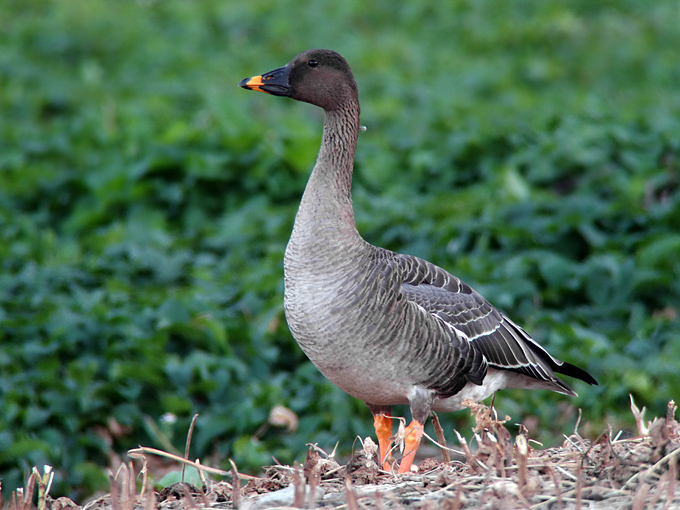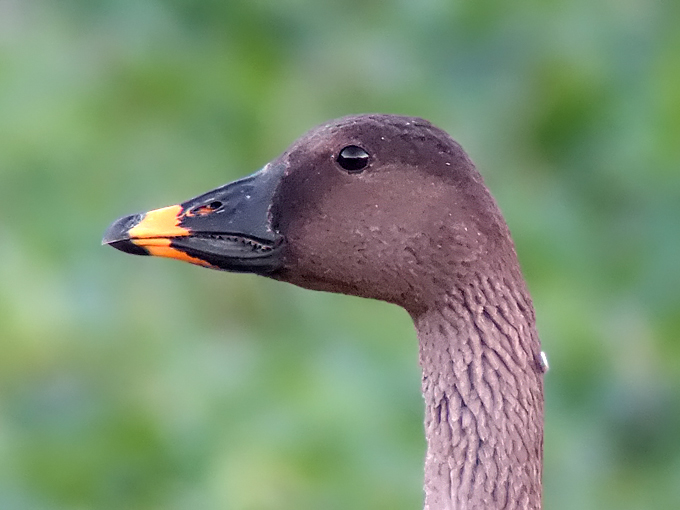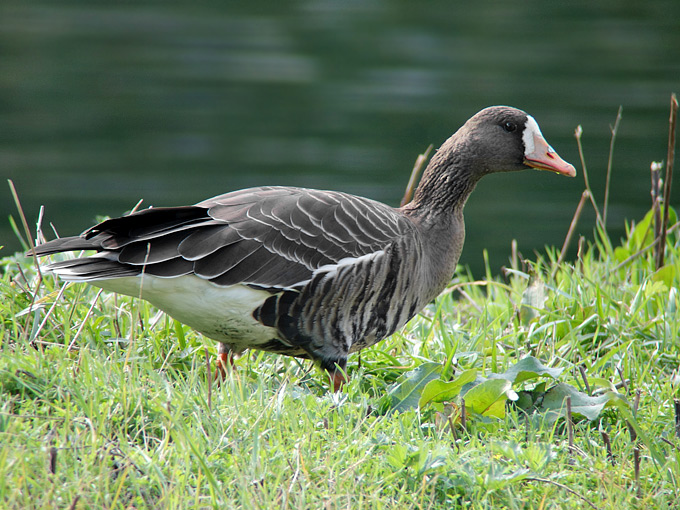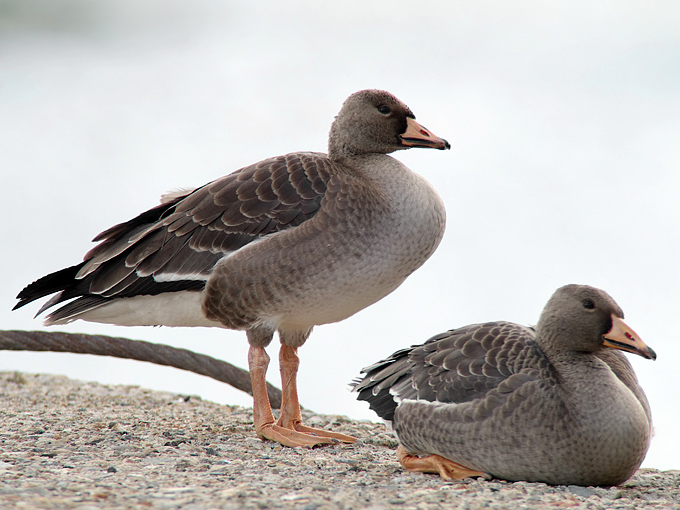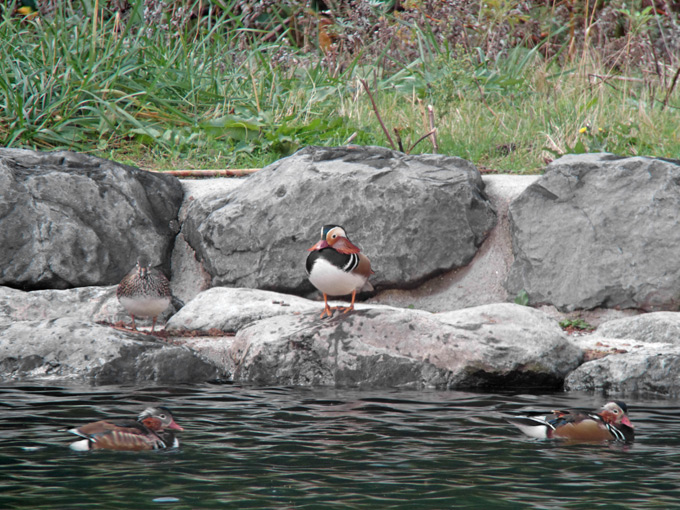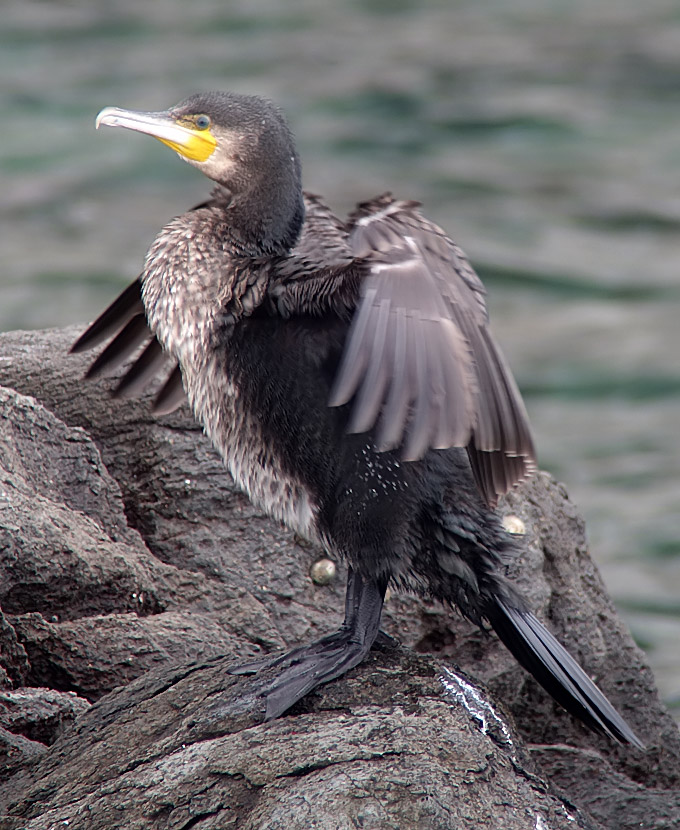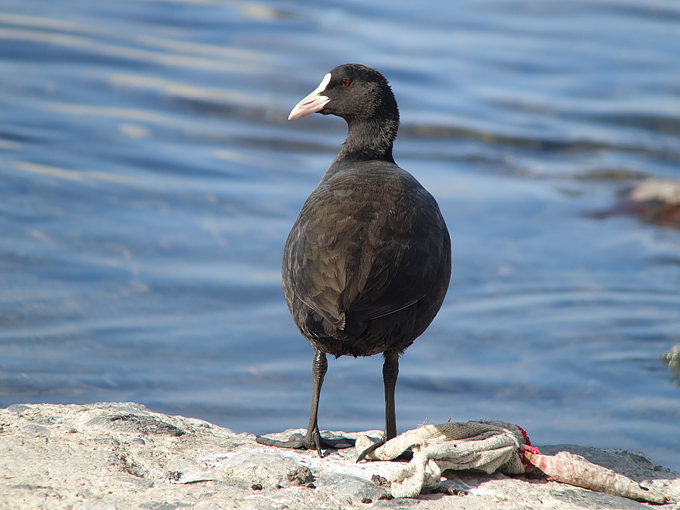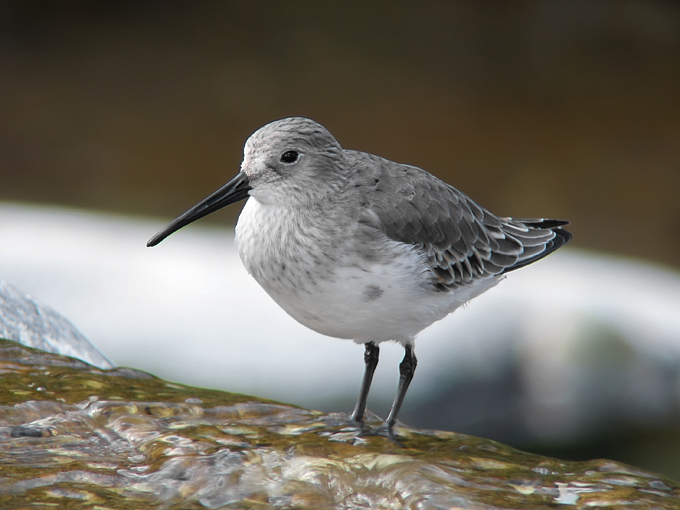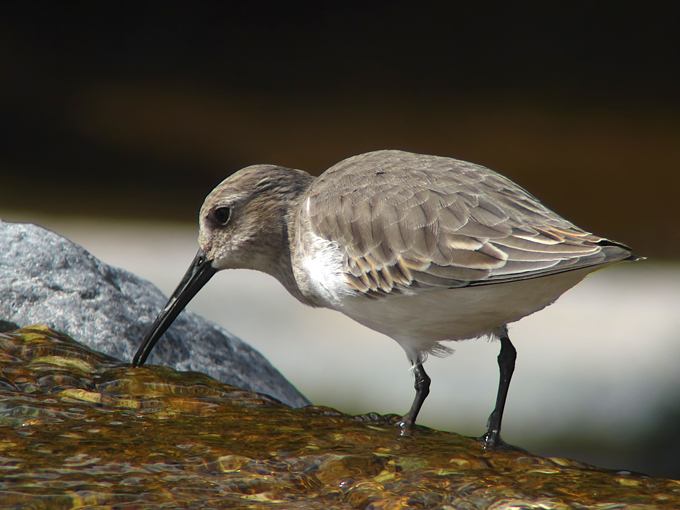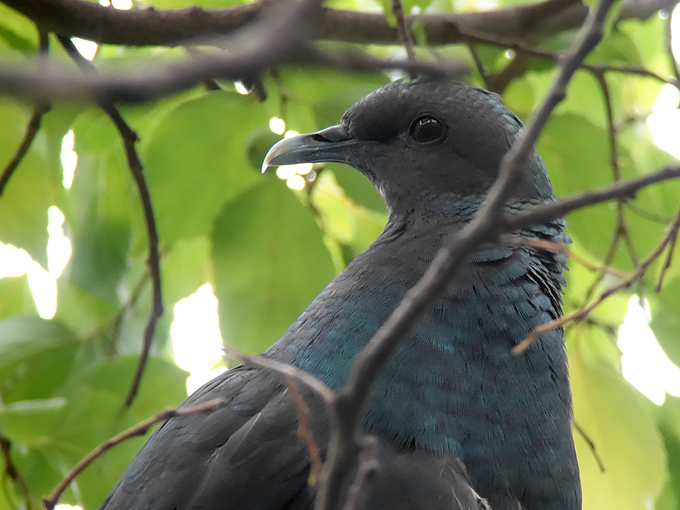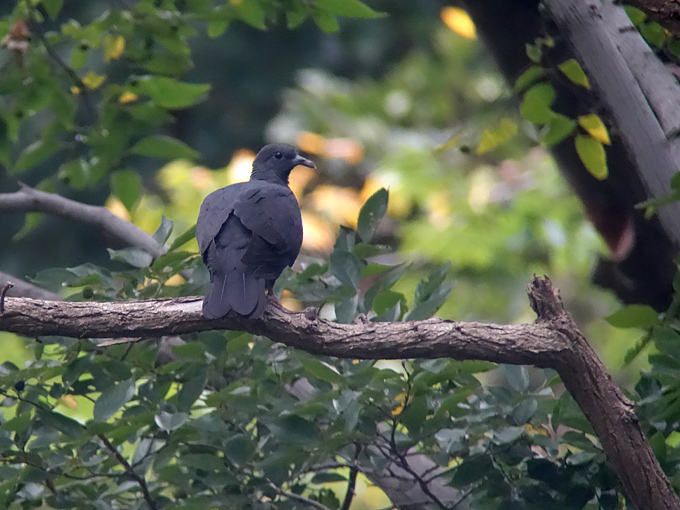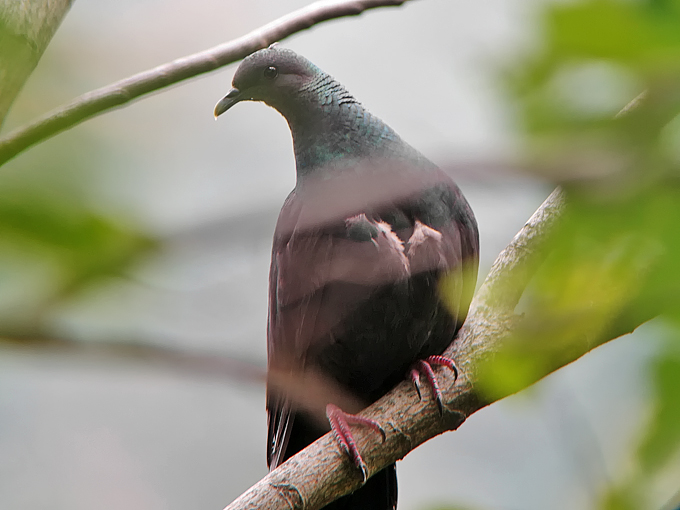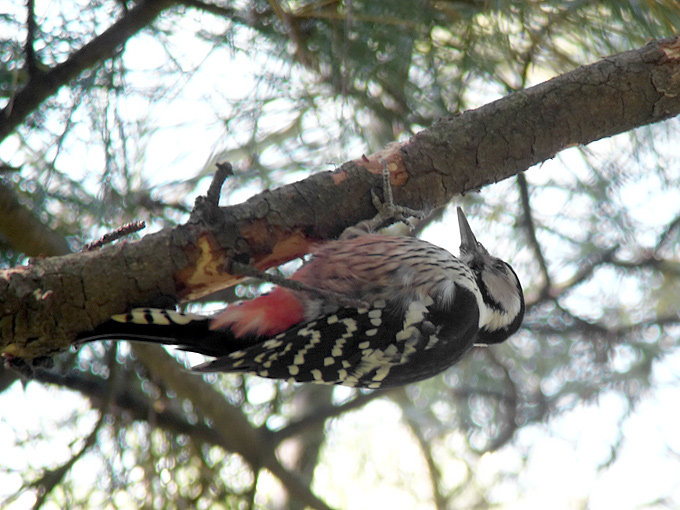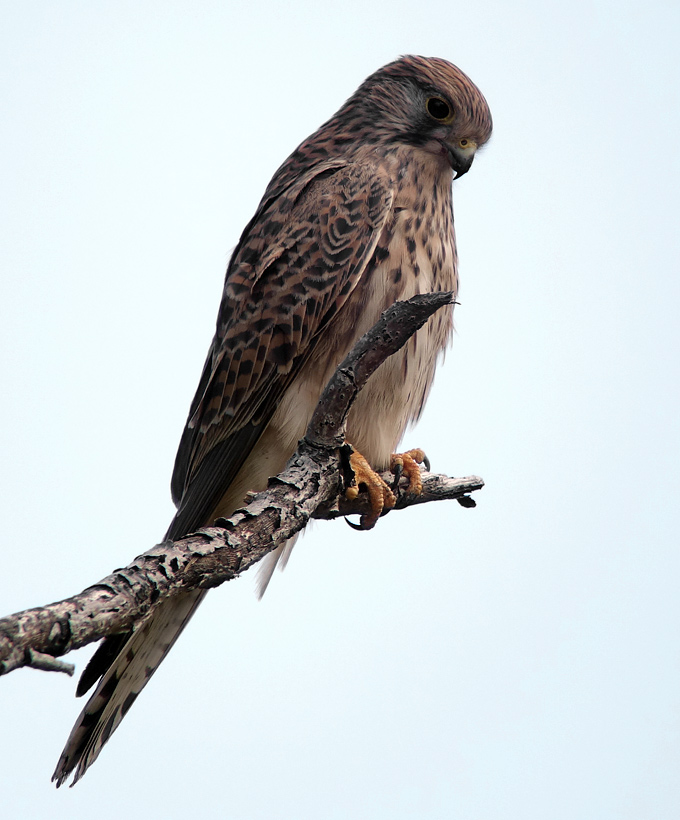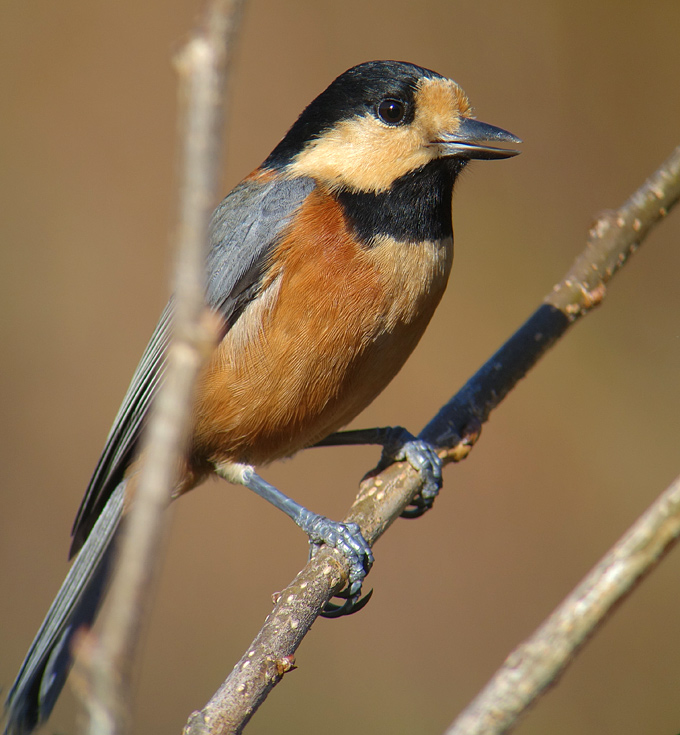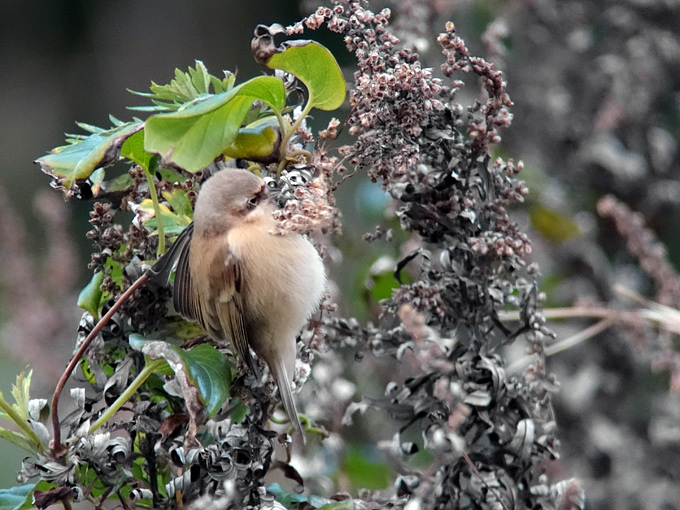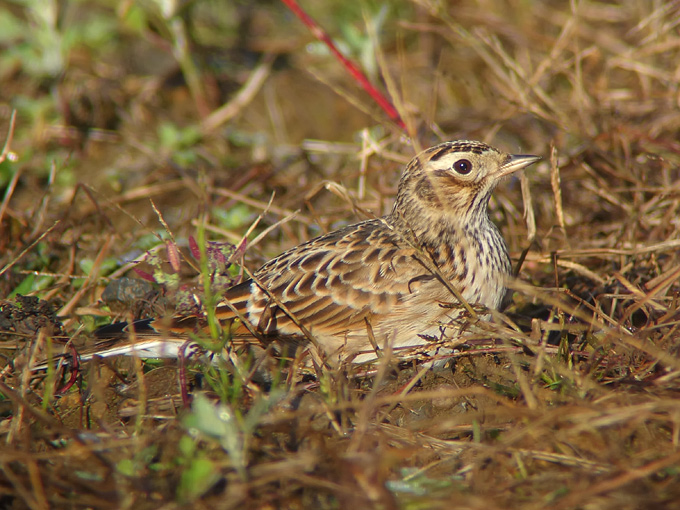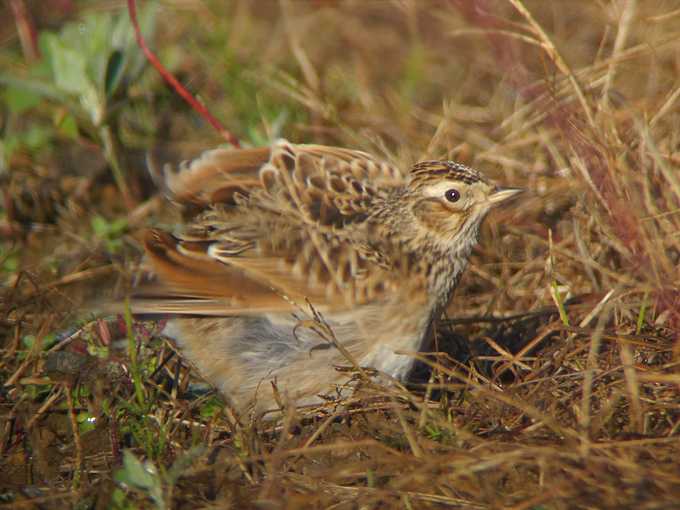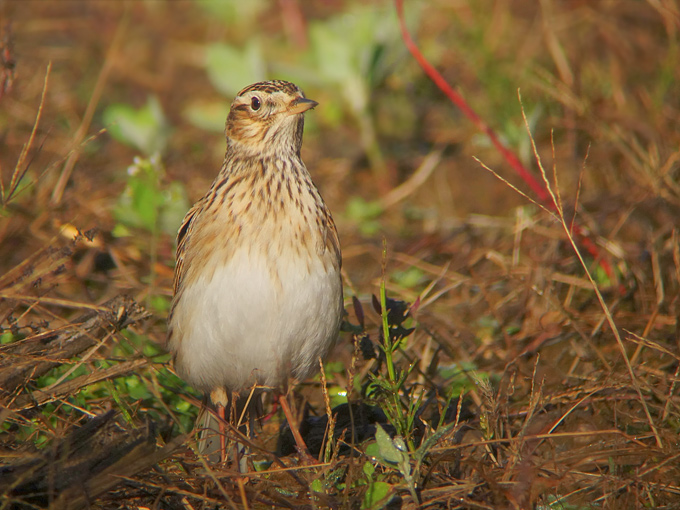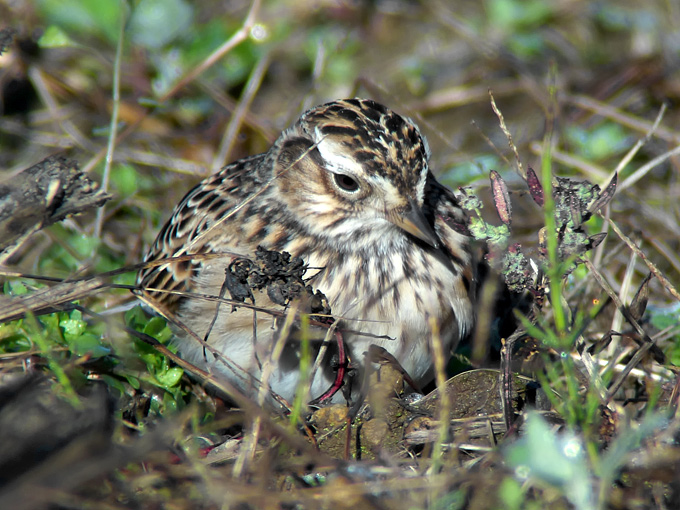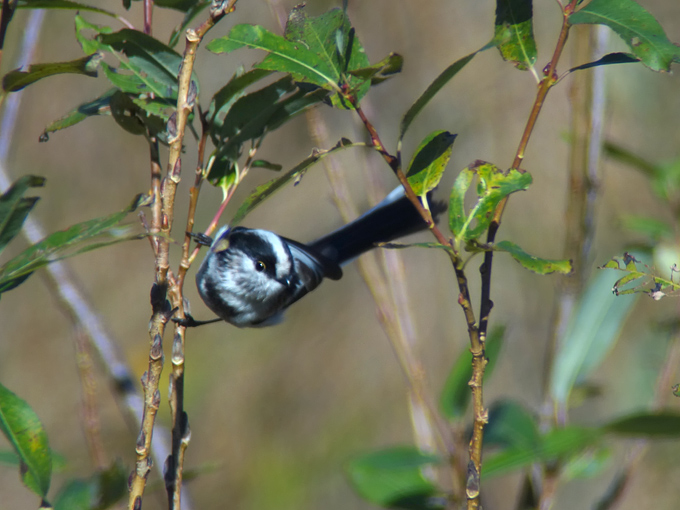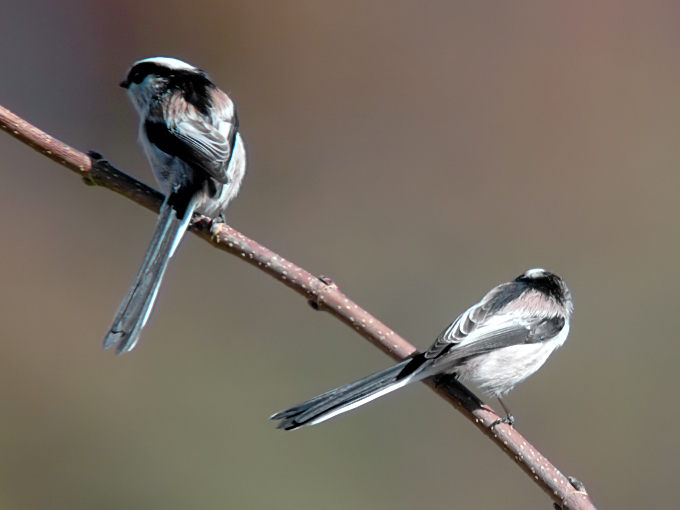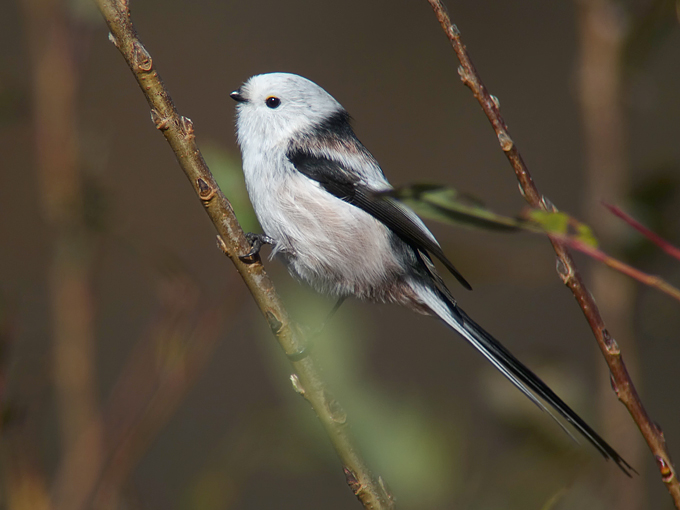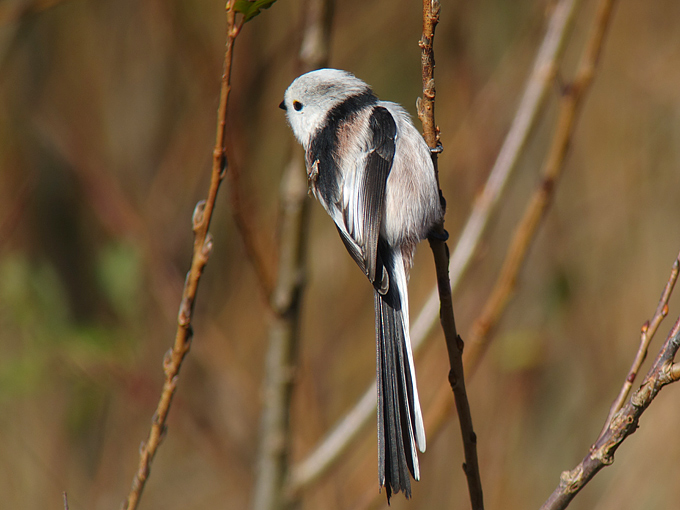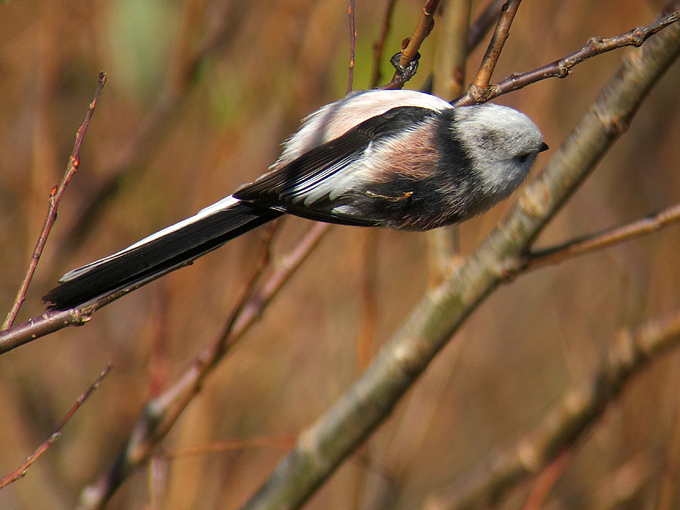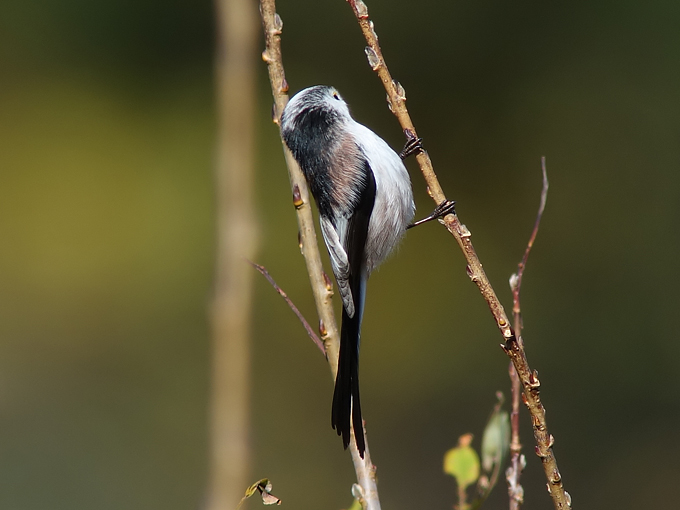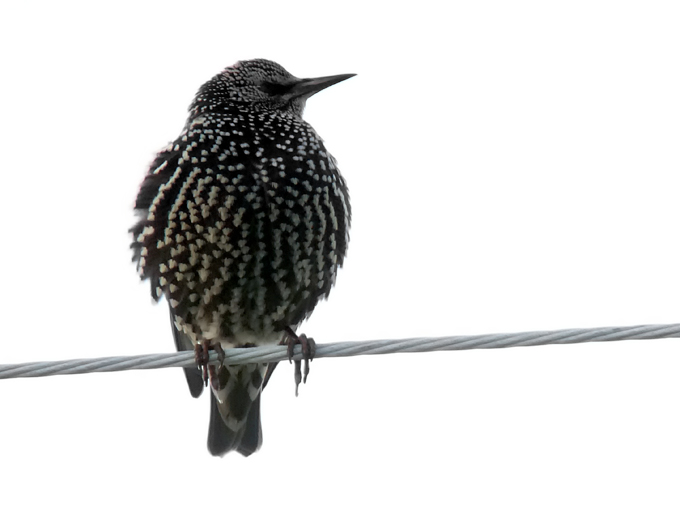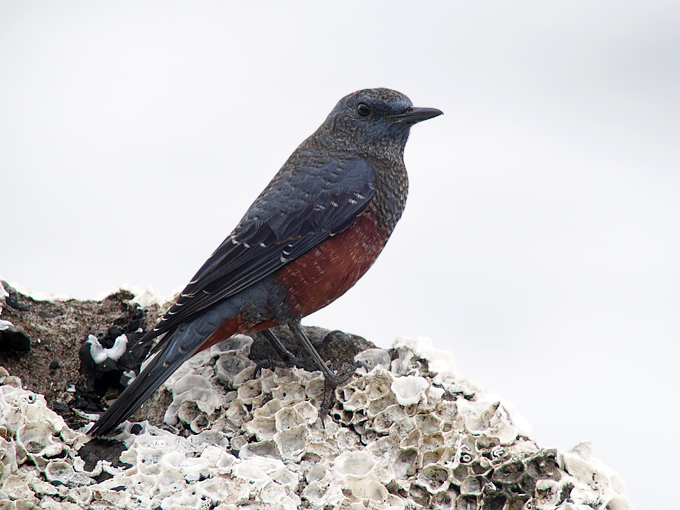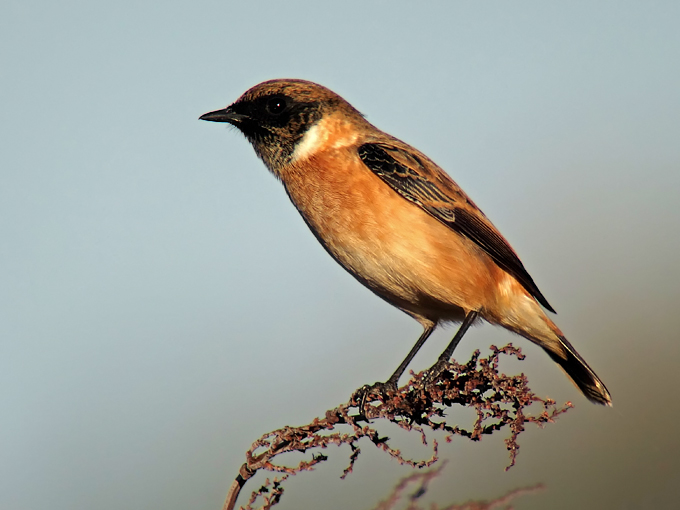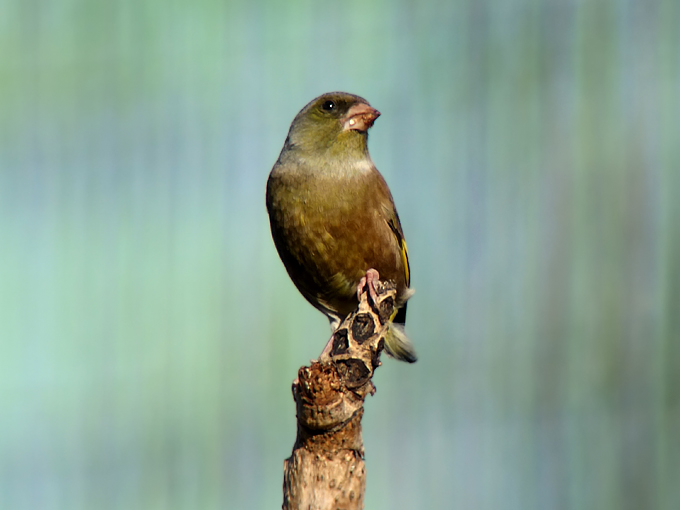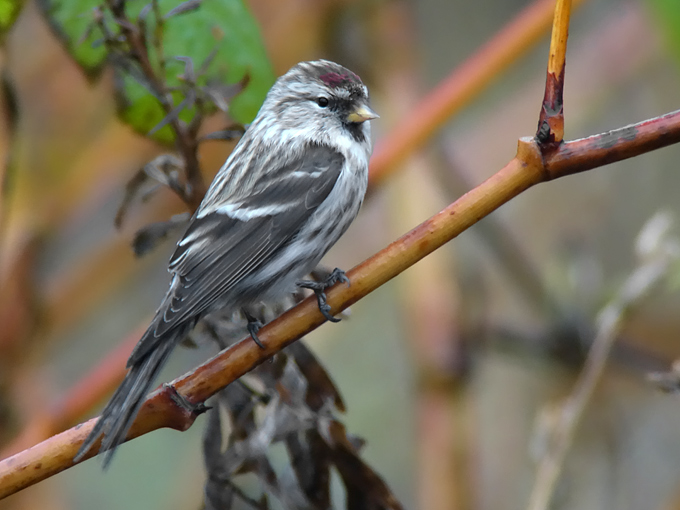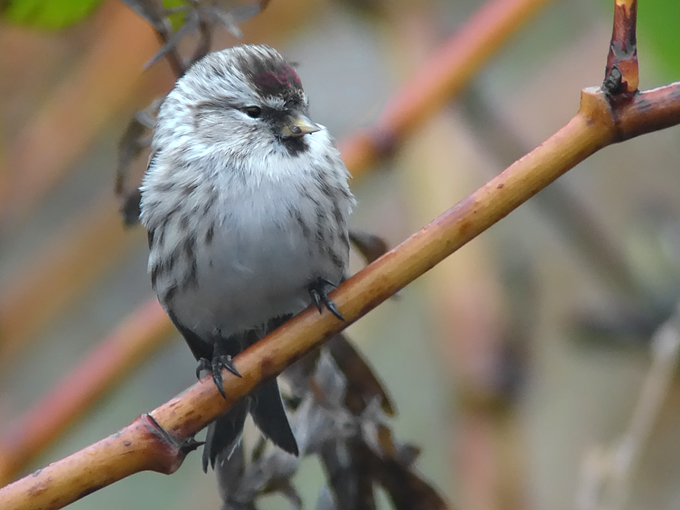Bird News from Nial Moores
I made a return visit to Ulleung Island to continue assessing migration strategies and to try to improve understanding of Ulleung’s “Big Three”: the Ulleung-endemic takahashii subspecies of White-backed Woodpecker; the globally Near Threatened Black Woodpigeon; and the distinctive Ulleung Varied Tit, described by Kuroda (1927) as an Ulleung-endemic subspecies utsurioensis.
On 31st, I took the morning ferry from Donghae to Ulleung (which proved to rather birdier than the ferry to Pohang) and surveyed Dodong in the afternoon. After overnight rain on the 1st, survey was attempted in the Nari basin, followed by some search effort in the far northeast, along the coast and up to Seokpo. On the 2nd, early morning rain and increasingly strong north-westerlies confined survey to parts of Dodong and Sadong in the less exposed east and southeast, where winds still gusted to F5-6. On the 3rd, winds fell from F5 north-westerlies to F3-4, and survey was attempted again at Nari, and then in Chodong. On the 4th, winds were light (NW F2), and visibility excellent, with temperatures ranging from an early morning 5C, with a light frost, to a high of 14C. Again, survey was conducted in the Nari basin; along the road from Nari to Cheonbu; and then in Hyeonpo. On the 5th, Taewa was surveyed (including for 1km or so upstream of the main road), and then the ferry was taken back to Pohang.
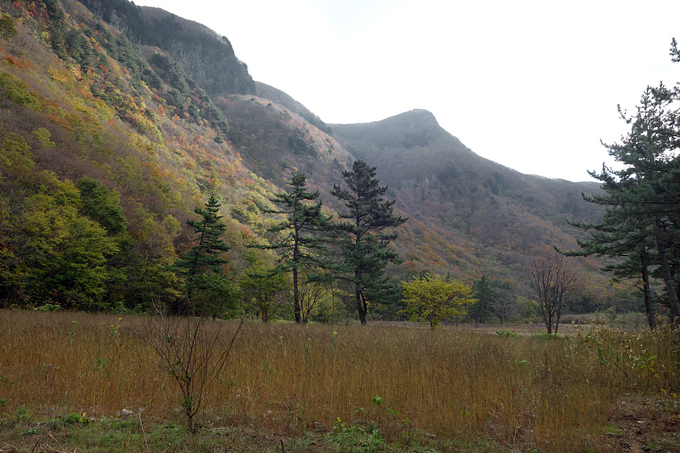
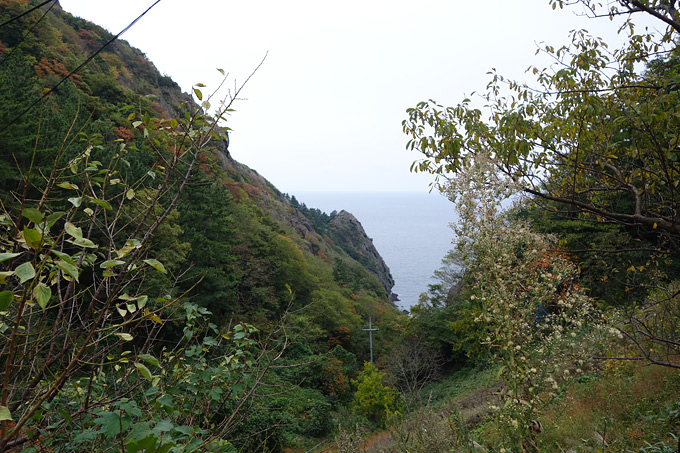
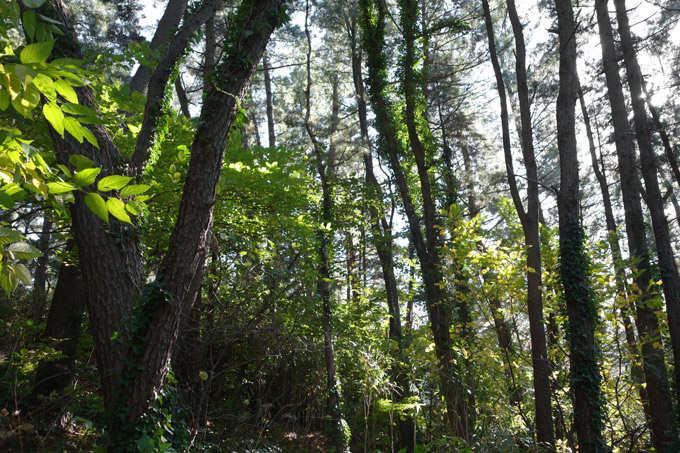
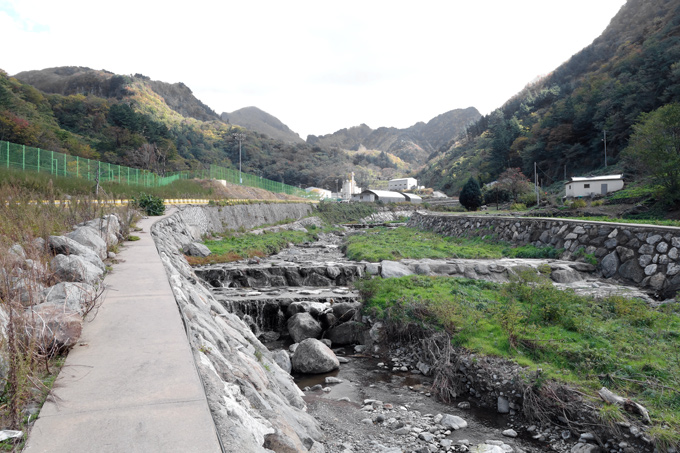
A total of 86 species were logged on Ulleung, with three additional species seen only from the ferry. In all, based on coarse calculations made through the excellent Daftlogic.com website, I surveyed between 5% and 10% of the island: on-foot, surveying along c.35km of roads and tracks and covering probably 370-400ha of forest, forest-edge and open ground well (so perhaps half of the more open areas on the island, but little of the higher-altitude forest in the island’s mountainous interior). I also made some observations from the bus each day (with >40km of coastal road travelled). Several areas were covered only once; others multiple times. All images were taken using a handheld Sony RX100 II through a truly superb Swarovski Optik telescope.
- Taiga Bean Goose Anser fabalis. One fairly small-billed individual in Hyeonpo on November 4th.
- Greater White-fronted Goose Anser albifrons. A total of four present (two in Chodong and singles in Hyeonpo, in the same field as two weeks earlier, and Taewa).
- Mandarin Duck Aix galericulata. Eight at Taewa on November 5th.
- Eurasian Wigeon Anas penelope. One in Nari on the 1st and one in Chodong.
- Mallard Anas platyrhynchos. Small numbers seen in several areas, with highest counts 11+ in Chodong and 12 in Taewa.
- Eastern Spot-billed Duck Anas zonorhyncha. Highest count was four in Taewa.
- Eurasian Teal Anas crecca. Small numbers seen in several areas, with at least 10 at Taewa the highest count.
- Common Pochard Aythya ferina. One flying around the Nari Basin in dense fog on the 1st.
- Tufted Duck Aythya fuligula. One at Taewa.
- Common Goldeneye Bucephala clangula. One on the sea on the 4th.
- Common Pheasant Phasianus colchicus. Widespread and very common, with at least 80 seen in Nari on the 1st (many giving a wide range of squeeks and squeeling calls).
- Streaked Shearwater Calonectris leucomelas. A total of 91 seen from the ferry on the 31st, including two just off from Ulleung, and 22 seen from the ferry on the 5th (all within c. 50km of Pohang)
- Swinhoe’s Storm Petrel Oceanodroma monorhis. One seen from the ferry on the 31st, about 15km from Donghae.
- Little Grebe Tachybaptus ruficollis. One at Cheonbu and four in Chodong on the 4th.
- Great Crested Grebe Podiceps cristatus. In addition to one at sea on 31st about 50-60km from Donghae, singles in Cheonbu, Hyeonpo and Chodong.
- Black-necked Grebe Podiceps nigricollis. One at Cheonbu on the 1st.
- Grey Heron Ardea cinerea. Small numbers (1-5) seen daily.
- Western Great Egret Ardea alba alba. Three near Cheonbu on several dates.
- Pelagic Cormorant Phalacrocorax pelagicus. One on the 5th.
- Great Cormorant Phalacrocorax carbo. Two in Cheonbu harbor on the 1st: hanedae or sinensis?
- Temminck’s Cormorant Phalacrocorax capillatus. Found along the coast and in several harbours in small numbers.
- Japanese Sparrowhawk Accipiter gularis. Singles seen on several dates.
- Eurasian Sparrowhawk Accipiter nisus. Again, the most numerous raptor with 23 “encounters” during the survey period.
- Northern Goshawk Accipiter gentilis. One on the 31st.
- Eastern Buzzard Buteo japonicus. Singles seen on three dates.
- Eurasian Coot Fulica atra. Four in Chodong harbor and one at Taewa.
- Common Snipe Gallinago gallinago. One or two in the Nari basin on the 1st.
- Dunlin Calidris alpina. In addition to 12 shorebirds seen about 50km off Donghae which were thought to be this species, one in the stream at Taewa was considered probably the same as the one seen there in late October.
- Black-legged Kittiwake Rissa tridactyla. Five (four adults and one First-winter) were seen moving north off Chodong on the 3rd.
- Black-headed Gull Chroicocephalus ridibundus. Only seen from the ferry, with 50+ about 5-10km offshore from Donghae on the 31st.
- Black-tailed Gull Larus crassirostris. The commonest gull, with 700+ on the 4th the highest day count.
- Common Gull Larus canus. One from the ferry on the 31st and one in Chodong on the 3rd.
- Glaucous-winged Gull Larus glaucescens. A First-winter was off Sadong on the 2nd.
- Vega Gull Larus vegae. The commonest large gull, with 600-800 seen in total around the island.
- Mongolian Gull Larus mongolicus. One in Chodong on the 3rd.
- Slaty-backed Gull Larus schistisagus. Seen daily in small numbers, with 50+ on the 2nd the highest day count. As always at this time of year, individual variation was extraordinary with both fresh-looking dark juveniles and worn- and bleached-looking First-winters.
- Taimyr Gull Larus heuglini taimyrensis. Seen daily in small numbers, with 5+ the highest day count.
- Black Wood Pigeon Columba janthina. At least 42 found by this survey (58-61 if the October 20th-25th survey is included, and if none of the birds were double-counted). This number is rather higher than the numbers found, according to Heritage TV, by "precise survey of Ulleungdo: 35 in 2003; 20 in 2009, and 32 in 2011. Numbers are reducing" (thanks to Tim Edelsten for this information). Considering that: (1) two of the survey dates were affected by strong winds; (2) many are thought to emigrate off the island in winter; and (3) that many suitable-looking areas were not visited, it still seems likely that the island population of this species will be >200, and could even be as many as 400-500 individuals. It is apparent that a proper focused survey would be helpful to establish more fully the global importance of Ulleung to this secretive species.
- Oriental Turtle Dove Streptopelia orientalis. Small numbers (3-10) seen each day.
- White-backed Woodpecker Dendrocopos leucotos. Only three heard and two others seen despite much searching. A more detailed account is provided at: The “Ulleung Woodpecker” Dendrocopos leucotos takahashii
- Common Kestrel Falco tinnunculus. Between one and three seen daily.
- Peregrine Falcon Falco peregrinus. Between one and four seen daily, including one in pursuit of a Black Wood Pigeon, and with perhaps four occupied territories on the island.
- Bull-headed Shrike Lanius bucephalus. Between one and three on several dates.
- Rook Corvus frugilegus. One in Sadong on the 2nd.
- Coal Tit Periparus ater. Some evidence of immigration during the survey period, with small numbers found in coastal bushes in the northeast, and an apparent increase in numbers island-wide during this short survey period. The highest day count was 25+ on the 4th.
- Varied Tit Sittiparus varius. Although less common than Eastern Great Tit in woodland in the northeast, pairs or small groups were commoner in other parts of the island, and were found in all wooded and park-type areas, with a high day count of 40+ and a total of >150 encountered. As noted in autumn 2013, all individuals showed some suffusion of orange-brown into the blue-grey of the back and mantle. All also showed orangey-suffusion in the paler parts of the head, breast and through the centre of the belly. Birds therefore appeared darker and obviously less clean blue and orange than birds seen on the mainland the same week. In addition, the impression that Ulleung Varied Tits often look quite strong-billed appears to be supported by the historical research of Kuroda (1927), who described this population as an endemic subspecies with a longer bill (15mm along the entire culmen) than populations on the mainland and in Jeju (both 13.5mm along the entire culmen). Is this longer bill a result of lack of competition from Eurasian Nuthatch or Japanese Pygmy Woodpecker?
- Eastern Great Tit Parus minor dageletensis. Common and widespread, with 30+ the highest day count.
- Chinese Penduline Tit Remiz consobrinus. One heard on the 1st and one seen at Cheonpo on the 3rd.
- Eurasian Skylark Alauda arvensis. Small numbers (5-20) were at Nari and heard passing over the island on several dates.
- Far Eastern Skylark Alauda japonica intermedia. At least 35 of the 40 skylarks seen and heard in good conditions on the 4th were identified as this taxon. In direct comparison with Eurasian Skylark, they gave harsher calls, appeared smaller, shorter-tailed, shorter-crested, darker and more obviously rust-toned, with cleaner breast bands.
- Brown-eared Bulbul Hypsipetes amaurotis. Common and widespread, with 50 on the 3rd the highest day count.
- Japanese Bush Warbler Horornis diphone. Two singles were heard.
- Long-tailed Tit Aegithalos caudatus. Becoming more widespread and obvious during the survey period, with probably 30 on the 4th the highest day count. The most numerous type was “southern” (presumably magnus), with 6-8 “northern” (presumably caudatus) seen on the 4th, when there was also one apparent intergrade.
- Japanese White-eye Zosterops japonicus. Rather local, with 3-6 logged each day.
- Goldcrest Regulus regulus. Small numbers logged each day, with some evidence of immigration during the survey period and highest day counts of 8 on the 3rd and 10 on the 4th.
- Eurasian Wren Troglodytes troglodytes. Most regular along small streams and on steep forested slopes, with small numbers (5-10) logged each day
- White-cheeked Starling Spodiopsar cineraceus. Twenty-five were in Hyeonpo on the 4th.
- Common Starling Sturnus vulgaris. At least one was with the White-cheeked Starling flock in Hyeonpo on the 4th.
- Eye-browed Thrush Turdus obscurus. One was heard on the 4th near Cheonbu.
- Dusky Thrush Turdus eunomus. Between three and five on most dates.
- Red-flanked Bluetail Tarsiger cyanurus. Remarkably scarce, with the high count two (on 31st).
- Daurian Redstart Phoenicurus auroreus. Logged each day, with 55 encounters and a highest day count of 15 on the 3rd.
- Blue Rock Thrush Monticola solitarius. Small numbers present along the coast only, with 1-5 seen most dates.
- Stejneger’s Stonechat Saxicola stejnegeri. Two in Nari on all dates and three in Hyeonpo (on the 4th).
- Russet Sparrow Passer rutilans. Ones or twos were found in Dodong (on 31st), Sadong (3rd), Nari (4th) and Taewa (5th).
- Siberian Accentor Prunella montanella. The only record was of c.3 heard in sustained overhead flight over the Nari Basin on the 4th.
- Grey Wagtail Motacilla cinerea. Between one and four seen on most dates.
- White Wagtail Motacilla alba. Between two and five seen on most dates (all lugens).
- Olive-backed Pipit Anthus hodgsoni. Remarkably scarce, with the highest day count 10+ on the 4th.
- Red-throated Pipit Anthus cervinus. One on the 1st was the only record.
- Buff-bellied Pipit Anthus rubescens. The commonest pipit, with the largest flock 120 (in Nari on the 1st), with additional smaller flocks in e.g. Sadong (30+) and Taewa (10+).
- Brambling Coelebs montifringilla. On 31st, in heavy overcast, a single flock of 380 flew over Dodong, with several smaller groups seen heading southwest. On the 1st, 900-1000 were present, with largest numbers in Nari. Subsequently, numbers fell rapidly, with only 25-30 logged on the four subsequent dates.
- Hawfinch Coccothraustes coccothraustes. One on the 1st was the only record.
- Japanese Grosbeak Eophona personata. One on the 31st, moving south with a flock of Brambling, was the only record.
- Common Rosefinch Carpodacus erythrinus. One heard in or over Nari on the 4th was the only record.
- Long-tailed Rosefinch Carpodacus sibiricus. Although several were seen in Gangwon Province on the 30th, not logged until the 4th, when three were in Nari and one was heard at Hyeonpo.
- Pallas’s Rosefinch Carpodacus roseus. Two in Nari on the 1st; two near Cheonbu on the 3rd; and at least five in the Nari area on the 4th.
- Grey-capped Greenfinch Chloris sinica. Between one and three logged each day. Although some vocalisations sound subtly different to some mainland birds (island acoustics? Origin?) , it is unclear why Kuroda (1927) considered this a distinct, Ulleung-endemic subspecies.
- Common Redpoll Acanthis flammea. Seven or eight were in Nari and Seokpo on the 1st; and two were in Nari on the 3rd.
- Eurasian Siskin Spinus spinus. On 31st, 150 were in Dodong and on 1st, 1,200 were logged in Nari and Seokpo – with flocks watched moving west across the island. Only 15-50 were logged on subsequent dates.
- Pine Bunting Emberiza leucocephalos. One in Nari on the 4th was the only record.
- Little Bunting Emberiza pusilla. One seen in Nari on the 4th was the only record.
- Rustic Bunting Emberiza rustica. Seen daily in small numbers, with 5-25 most dates and 40 on the 4th the highest day count.
- Yellow-throated Bunting Emberiza elegans. Seen daily in small numbers, with 3-10 most dates and 25 on the 4th the highest day count.
- Black-faced Bunting Emberiza spodocephala. Remarkably scarce, with one heard on the 1st the only record.
- Pallas’s Reed Bunting Emberiza pallasi. One in Nari increasing to six there on the 4th.
- Ochre-rumped Bunting Emberiza yessoensis. One in Nari on the 4th.
- Common Reed Bunting Emberiza schoeniclus . One on 3rd and two on the 4th.
- Lapland Longspur Calcarius lapponicus. Three were in Nari on the 4th.
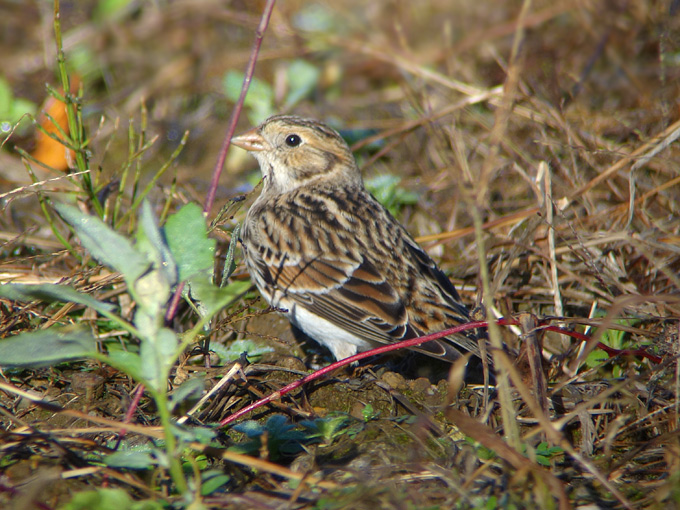 Lapland Longspur Calcarius lapponicus, © Nial Moores
Lapland Longspur Calcarius lapponicus, © Nial Moores
